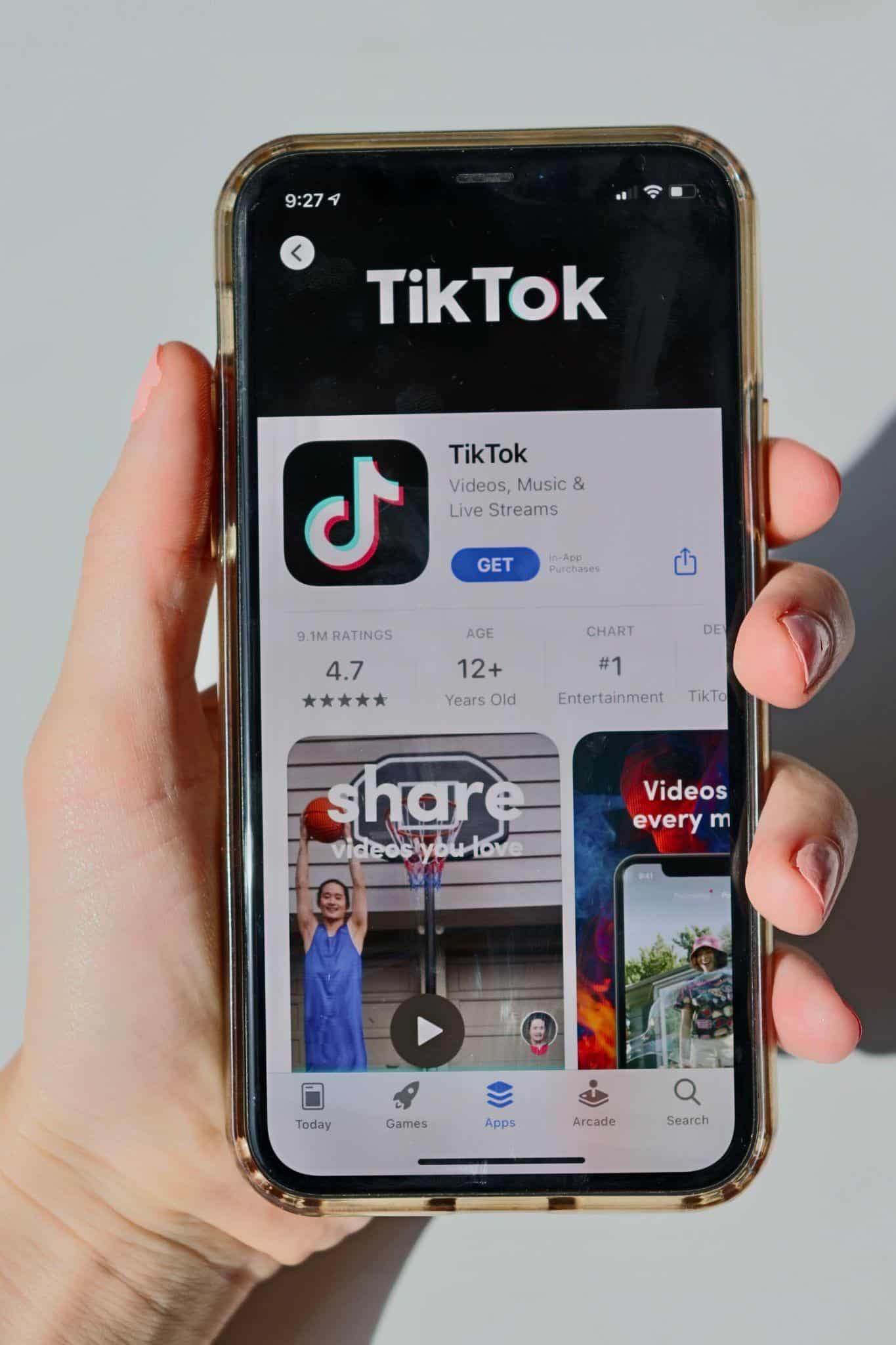Digital commerce is here to stay, and social media selling is a crucial part of e-commerce business (or any business for that matter) that maintains an online selling presence. 76% of consumers state that they have purchased products initially viewed on social media platforms. Considering that billions of consumers use social media platforms daily, there is an enormous potential customer base; hence, selling tailored for social media has become strategic to success.

Photo by Alexander Shatov on Unsplash
What Is Social Media Selling?
Brands that use social media channels to sell their products practice social media selling. Social media platforms offer the possibility for companies to connect and engage with followers and potential customers. Social media selling is a powerful commercial tool for incrementing sales, regardless of the size of the business.
To fully benefit from social media selling, it’s essential to engage potential clients and not just bombard them with unsolicited advertising ploys that may be deleted. Quality posts that bring added value are more critical than the quantity of content posted.
Traditional brick-and-mortar neighborhood stores established a genuine rapport with customers based on trust and loyalty; social media platforms are the digital age’s tool for doing the same, but this time, on a global level.
LinkedIn SSI – the Social Selling Index
The LinkedIn platform has created a metric for tracking social selling results to aid businesses, and the higher the SSI rating, the better the performance. The platform updates it daily. It analyzes four critical types of business performance, such as:
- Defining and establishing a business brand – involves creating a meaningful profile that reflects the brand’s values and detailed information regarding the products offered
- Identifying a target audience and collaborating with industry influencers – it’s essential that a target audience of potential customers is identified through research. Then, the brand must engage these potential clients, and industry influencers can aid in this. Messages, comments, questions and answers, and all types of outreach are optimal for developing customer engagement
- Regular, valuable content postings – posting quality content that brings value to a customer base will resonate. Researching the target audience, including their preferences, should guide content creation
- Connecting and engaging customers to increase sales – whether researching opinions or offering solutions to potential problems, sellers must engage their audience to maintain a connection and build a long-term relationship to establish a loyal customer base
Social Media Selling Benefits
Social media selling can undoubtedly supplement and increase traditional sales, but that’s not all; social media selling can also improve customer relations and retention.
Advertising and alerting clients about new products and furnishing updates can be much less invasive than direct calls and promotions; salespeople will still need to be available to answer inquiries, of course.
The time necessary to complete a sale can also be reduced, as it’s much easier to research products with just a click. You may find new business opportunities or meet new potential customers by joining relevant online groups; social media selling can also aid in building long-term business relationships and friendships. Finally, social media selling allows businesses to maintain a consistent selling presence and brand message.
Essential Social Media Selling Steps and Tips
Determine Who Your Target Audience Is
If you wish to create a loyal customer base that returns regularly to purchase your brand, you must determine your target audience. To build and maintain such relationships, you must know who you wish to engage with, and set out to learn everything you can about them. Simply creating a social media presence and posting will not suffice when attracting potential customers; to create an effective selling campaign, brands must analyze their target group’s behavior, interests, and demographics.
For relationships to be formed and sales to be increased, content and messaging should be genuine, trustworthy, and relevant to the needs and likes of potential clients. When creating your target audience, make it a point to develop fictional customers that represent the gender, age, educational level, income range, interests, and hobbies; the more detailed your target audience research is, the better the possibility of connecting for sales.
When attempting to succeed in social media selling, it’s crucial to analyze the behavior of your target audience on social media platforms. Identify what content inspires them to engage, what kind of accounts they follow, who their favorite influencers are, and their favorite hashtags; behavior analysis will also aid in creating attractive content and in reaching your target group on their preferred social platforms.
When engaging potential customers, it’s vital to remember that they are real people with needs, interests, and preferences; truly connecting and creating a lasting relationship with customers depends on providing value and engagement.
When offering new content, include educational information that teaches something or resolves a dilemma. Integrate videos or infographics or create blog posts, and take time to respond to customer questions or comments and initiate discussions. If you demonstrate your concern for your customers, you’ll have more opportunities to build trust and loyalty, eventually transforming these sentiments into sales.
Identify and Assess a Potential Customer’s Needs

Photo by Alexis Fauvet on Unsplash
Ask the right questions to get the best answers and the most information. Suppose prospects need clarification or are facing obstacles – in that case, they may reach out to you because you ask questions of your target audience and are interested in their needs, plus you are already communicating with them.
Know Your Social Media Platforms
Not every social media platform caters to every demographic group, so understanding which social media platform resonates with your target audience can help you reach your ideal audience, and do so most effectively. Each platform will have a specific demographic base, although some overlap may exist.
Consider these platforms in terms of age demographics:
This is, arguably, the most versatile social media platform around, as it caters to an incredibly diverse audience in terms of demographics – most, if not all, businesses should consider including FB in their marketing strategies.
Instagram is the king of visual social media, with a large following among younger audiences, particularly in the 18 to 34 age group. Beauty, fashion, and lifestyle can be significant draws with demographic groups attracted by visuals. Communication is achieved through visual language, even if it is common to see numerous hashtags attached to an Instagram caption, as these tags permit users to locate images and videos concerning their interests.
TikTok

TikTok is a favorite of Generation Z and has exhibited exponential growth as a social media platform. TikTok may be the ideal choice for businesses oriented to younger demographic groups.
LinkedIn differs from other social media because it is a professional networking social media platform also used for recruitment. Audiences tend to be more mature, so LinkedIn is a potentially excellent selling vehicle for businesses targeting professionals.
Highly appealing to female audiences, Pinterest has a strong following in the 25 to 45 age range and is an excellent vehicle for businesses in the fashion, home décor, lifestyle, and DIY industries.
X (formally Twitter)
Communication comes naturally to X, and offers a fantastic opportunity to stay in touch with clients, answer questions, and build a client base. It’s dedicated to both information and entertainment, and you can also create lists to monitor content from your target audience.
Businesses must analyze their target audience to decide which social platforms are best suited to their social media selling.
Provide Value
This concept can never be overstated. The idea is not only to sell to, but to provide customers with expertise. Posting interesting, quality content that brings value to customers and can be shared is a great sales tool; it helps to also make it a practice to share the content of others that aligns with your brand, industry, and company values.
Original, compelling content can increase credibility and social media engagement. Posts can take the form of tips, insights, or any type of relevant information; request that people comment, and from there, start a conversation.
Always pay attention to the comment section, as this will help you better understand your prospects and their point of view. You’ll also discover the type of content they prefer and will engage with, and this will indicate the type of content to share.
Include success stories in your postings, as testimonials are a convincing form of proof. People gravitate to and trust other people like themselves more often than to brands. The sharing of your customers’ success stories can resonate with prospects and increase your credibility.
Provide Great Visuals
A significant part of social media content is visual, so enterprises must provide quality visuals to attract target customers. Beautiful visual content can grab a potential customer’s attention and influence or determine purchases; visually striking, high-quality videos or photographs can also include product details. Images must be of exceptional quality, as poorly photographed or videos can turn customers away.
Videos are incredibly effective, but brands need to use a mix of visual content, including graphics or animated GIFs, and offer a variety of formats to provide a visually stimulating presence on social media platforms. Images are everything when selling on social media because customers cannot touch and feel products. Ensure images offer true colors, size comparisons, and a texture closeup.
Do online presentations, including live webinars, video conferencing, or one-on-one meetings. There are lots of visual tools available, and they all have benefits.
Interact With Potential Customers as Often as You Can
Follower engagement is a decisive part of social media marketing and selling. When businesses respond to messages and comments, they show they care and may reap the benefits of increased sales opportunities. It’s a terrific opportunity for initiating and building rapport with potential clients, and it can aid in building loyalty to your brand. Look for opportunities to converse about your products.
Personalizing interactions is even better! Sharing professional contacts, reacting to a shared content piece, or having a shared interest with a social media prospect can be the basis of creating and maintaining a connection; automated commenting tools do not elicit the same response as a personal comment.

Photo by Adam Jang on Unsplash
When engaging your potential clients, don’t expect your sales to increase immediately, as some people may not buy your products on the spot, but may be persuaded if you stay in touch and maintain contact. Pay attention to their content and offer congratulations if they experience life-changing events like marriage, a baby, or graduation; if they have a problem and need assistance, help if you can. Maintain a connection even if it doesn’t concern your product.
Pay attention to messaging boards and social media platforms regarding what customers and people are saying about your brand or business. This is essential, especially when they are dissatisfied or criticizing your brand or product. This can aid in alerting your customer service department that a particular situation needs to be addressed, and you’ll be more prepared should prospects raise issues after reading a disgruntled customer’s review. Consider using a project management software for your customer service team so that you have a centralized location to share customer feedback and find solutions to their problems.
Share Your Expertise
Positioning yourself as an expert or solution provider will set you apart from your competition. To do this, you must establish yourself as authoritative in your industry. Attract your target audience by posting relevant content and updates about innovations. Share your knowledge and, at the same time, demonstrate that you are well-informed on subjects pertinent to your industry; establishing yourself as an expert can translate into buyers wanting to consult you before purchasing.
Once you’ve established your expertise online, you need to distinguish yourself from the competition; make it a point to formulate a unique message explaining why you are different. With so many choices, consumers can find decision-making complicated and challenging, which means buying can take longer and require more time – you’re offering customers a more straightforward choice by distinguishing yourself from the competition.
Monitor Engagement

Photo by Joshua Mayo on Unsplash
Use social media metrics to evaluate engagement through likes, shares, and comments; data analytics can indicate whether your postings are resonating with your target audience. Learn which of your content brings the best results and build from there. When a specific topic resonates more, post more often about it.
Final Thoughts on Social Media Selling
Many businesses or entrepreneurs assume that a brand needs a vast following to engage in social media selling successfully, yet nothing could be farther from the truth; what you do need is effective engagement with your potential customers.


